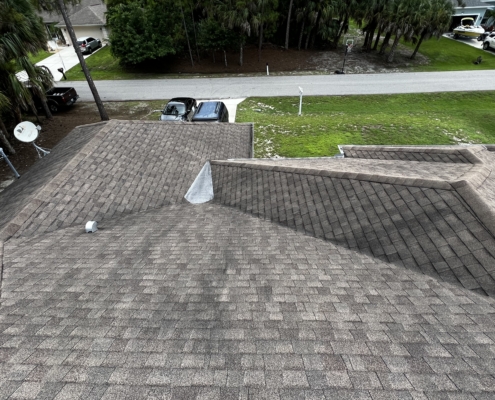Things to look for when touring a home
Touring homes to find “the one” can be a daunting process. You may end up looking at several different houses in various areas of town all in one day. After a while, they can start to blend together. While location is key, there are some other things you should consider when looking for your dream home; things that you may need to negotiate in your offer or things that you may need to save a little extra money for. No Worries! We’ve compiled a helpful list of important items to look for or ask the sellers about when hunting for your new home.
Roof age
Roof age is one of the most important things to consider when touring homes. An old roof can end up costing you several thousand dollars in repair or replacement costs. Be sure to ask the seller or the listing agent how old the roof is. If no information can be obtained, it is wise to contact the local building department to see if any roofing permits have been pulled for the home.
It is also important to understand that different roof coverings have different life expectancies. For example, an architectural shingle roof has a typical life expectancy of 15-20 years in Florida. A modified bitumen (rolled asphalt) roof has a typical life expectancy of 10-12 years in Florida. Take these typical life expectancies into consideration when evaluating the roof age. A more comprehensive list of various roof coverings and their life expectancies can be found at this link.

Type of plumbing supply pipes in the home
Another thing to look for is the type of plumbing supply pipes in the home. If the home was built after the mid 1990s, it likely has Copper, CPVC or PEX plumbing. All of these are good choices. If the home was built before the 1990s, it could have some not-so-great plumbing like polybutylene, galvanized steel, or aging copper. These not-so-great pipes are more prone to leaks and potential water damage to the home.
The best places to look in order to verify the type of plumbing in the home is where pipes come out of the walls at the water heater, under sinks and behind toilets, or as the supply hose between valves and fixtures under sinks and at toilets.

Electrical panel brand
This is an important one that many people are unaware of. If you are looking at older homes, certain electrical panel brands that were originally installed in these homes pose several hazards, such as circuit breakers that don’t trip or breakers that are overloaded. Because of this, insurance companies in Florida may deny coverage on the home if one of these panels is present.
Below is a list of the more common outdated and unsafe electrical panels.
- Federal Pacific
- Zinsco
- Sylvania
- Challenger
HVAC system and water heater age
Knowing the age of the home’s water heater and HVAC system can save you money in the long run. It’s important to know this information to determine what stage the appliance is in, in terms of its typical life expectancy. For example, the typical life expectancy in Florida, for most condensing units is 10-15 years and 15-20 years for the air handler. Most water heaters have a typical life expectancy of 8-12 years. Properly maintained units can exceed these expectancies.
Identifying the age of these units is easy. Locate the manufacturer’s tag on the unit itself. Most newer units have the date printed right on them. If no date is present, then the date of manufacture is usually encoded in the unit’s serial number. When this is the case, you can visit building-center.org to see a comprehensive list of major appliance manufacturers and their coding formulas.

Summary
Take the items above into consideration when touring homes. Knowing that you may have to replace items like the roof or electrical panel ahead of time should help in your decision-making process when choosing your dream home.




Leave a Reply
Want to join the discussion?Feel free to contribute!